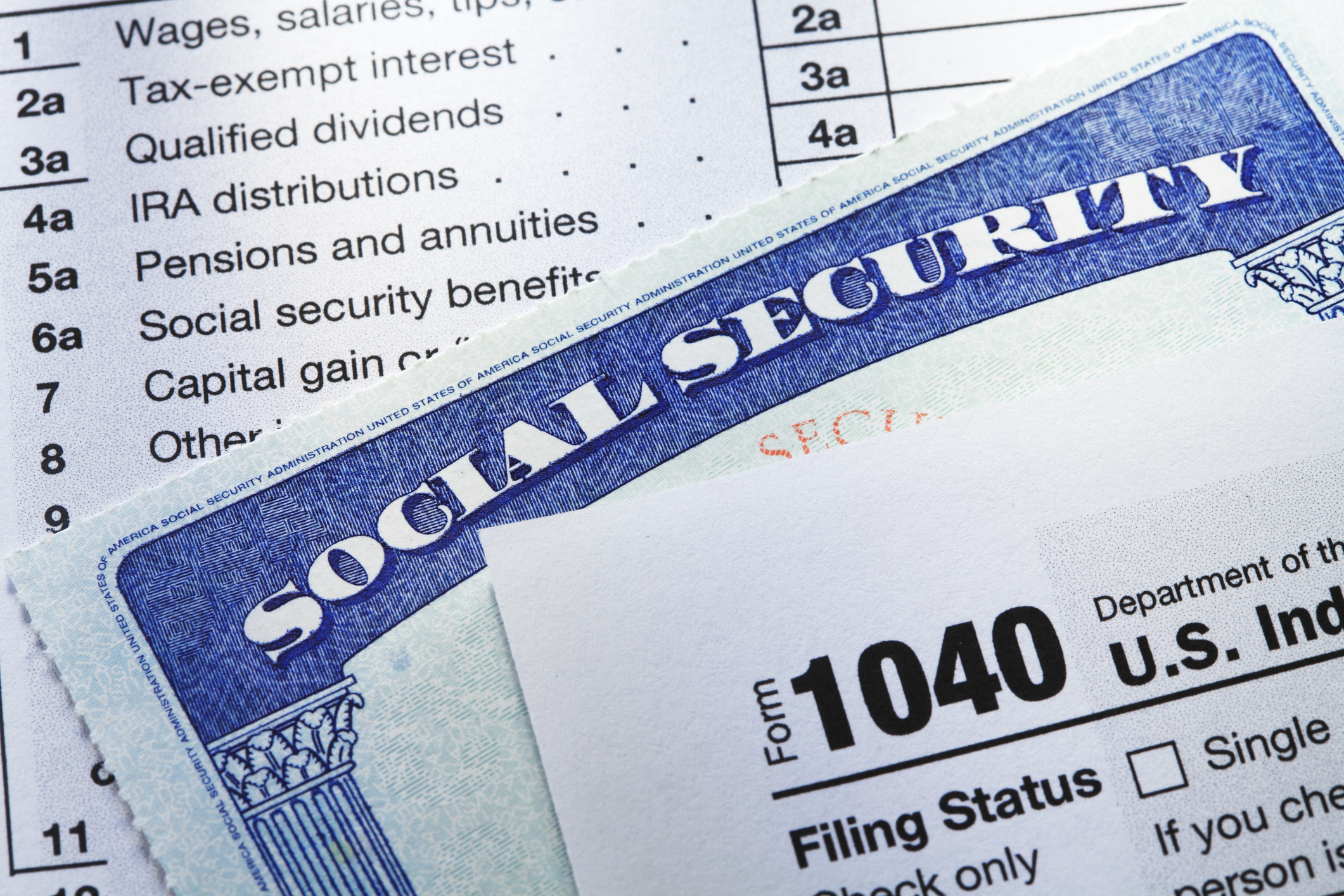
When you’re years away from retirement, Social Security seems straightforward: You’ll leave your job, file for benefits and receive a monthly check for the rest of your life — boom! But in reality, getting the most out of Social Security is anything but simple. As you near retirement, the decisions you make could have a significant impact on the amount of money you receive, and some of these choices are irrevocable. You’ll need to move carefully to maximize this income stream.
Unfortunately, anyone who is planning to file for Social Security must consider the financial health of the U.S. retirement safety net. The 2024 annual Social Security and Medicare trustees report projects that the Old-Age and Survivors Insurance Trust Fund, which pays Social Security retiree benefits, will run out in 2035, a year later than was projected last year. At that point, the fund's continuing income is expected to fund just 83% of scheduled benefits.
Medicare is in better shape: The Hospital Insurance fund for Medicare Part A is expected to be able to fully pay scheduled benefits until 2036, five years longer than last year’s projection.
Here are 12 essential details you need to know:
1. Find your Social Security Full Retirement Age
You can claim your Social Security benefits a few years before or after your full retirement age, and your monthly benefit amount will vary as a result. But first, you have to know what that age is for you.
Also known as “normal retirement age,” your Social Security ‘full retirement age’ (FRA) is the age at which you’re entitled to 100% of the Social Security benefits you’ve earned. FRA is 66 for beneficiaries born between 1943 and 1954; it gradually increases to 67 for beneficiaries born in 1960 or later. (Are you in that transition zone? Use our Social Security Full Retirement Age calculator to pin it down.) If you take benefits before FRA, your benefits will be reduced. If you file at age 62, for example, benefits will be as much as 30% lower.
2. How do you become eligible for Social Security benefits
To be eligible for Social Security benefits in retirement, you must earn at least 40 "credits" throughout your career. You can earn up to (but no more than) four credits each year, so it takes 10 years of work to qualify for Social Security.
In 2025, you must earn $1,810 to get one Social Security work credit and $7,240 to get the maximum four credits for the year. And yes, that means having money withheld for Social Security and never getting it back is possible. The minimum is the minimum.
3. How are your Social Security benefits calculated?
Social Security uses your highest 35 years of earnings, indexed to a national average wage index, to calculate your primary insurance amount (PIA). If you have fewer than 35 years of earnings, each year with no earnings will be entered as zero. You can increase your Social Security benefit at any time (even via part-time work during retirement) by replacing a zero or low-income year with a higher-income year.
There is a maximum Social Security benefit amount you can receive, though it depends on the age you retire. For someone at full retirement age in 2025, the maximum monthly benefit is $4,018, up from $3,882 in 2024.
To estimate your benefits, use Social Security’s online Retirement Estimator.

4. There’s an annual Social Security Cost-of-Living Adjustment (COLA)
One of the best features of Social Security benefits is that the government adjusts the benefits each year based on inflation. This is called a cost-of-living adjustment, or COLA, and helps your payments keep up with increasing living expenses. The Social Security COLA is significant. It’s the equivalent of buying inflation protection on a private annuity, which can get expensive.
Because the COLA is calculated based on changes in a federal consumer price index, the size of the COLA depends largely on broad inflation levels determined by the government (and they’re a bit different than those used in the monthly consumer price index followed by economists and others). In 2025, Social Security beneficiaries receive a 2.5% COLA in their monthly Social Security benefits.
Here’s what COLAs have been in other recent years:
- 2024 3.2%
- 2023: 8.7%
- 2022: 5.9%
- 2021: 1.3%
- 2020: 1.6%
- 2019: 2.8%
- 2018: 2%
- 2017: 0.3%
- 2016: 0%
- 2015: 1.7%
5. Your monthly Social Security benefits increase the longer you wait to claim
While you can collect Social Security benefits as soon as you turn 62, taking benefits before your full retirement age will spell a permanent reduction in your payments — as much as 25% to 30%, depending on your full retirement age.
If you wait until you hit full retirement age to claim Social Security benefits, you’ll receive 100% of your earned benefits. But you can do even better by waiting to claim your Social Security benefits until age 70 — your monthly Social Security benefit will grow by 8% a year until then. Any cost-of-living adjustments will be included, too, so you don’t forgo those by waiting. Think of that time as bonus earning years — and remember that you’d be hard-pressed to find those sorts of gains for zero risk during that period anywhere else.
Waiting to claim your Social Security benefits can help your heirs as well. By waiting to take her benefit, a high-earning wife, for example, can ensure that her low-earning husband will receive a much higher survivor benefit in the event that she dies before him. That extra income of up to 32% could make a big difference.
6. There’s a Social Security spousal benefit
Marriage is rewarded when it comes to Social Security. One spouse can take what’s called a spousal benefit, worth up to 50% of the other spouse’s Social Security benefit. For example, if your monthly Social Security benefit is worth $2,000 but your spouse’s own benefit is only worth $500, your spouse can collect a spousal benefit worth $1,000 — bringing in $500 more in income per month. (Note: The higher-earning spouse must apply for his or her own Social Security benefit first.)
Just as the benefit based on your own work history is reduced if you claim it early, the same is true for a spousal benefit. That 50% figure is the maximum amount that a spouse who is at least full retirement age is eligible for. Taking the spousal benefit early at, say, age 62, reduces the amount to as little as 32.5% of the higher earner’s benefit. If you take your own benefit early and then later switch to a spousal benefit, your spousal benefit will still be reduced.
7. Other pensions used to reduce your Social Security benefits
Prior to 2024, your benefits were affected if you had a pension from a job that didn’t have Social Security taxes taken out of your paycheck. Common examples include people who worked for a public education system, railroad workers and Federal government employees hired before 1984 who are covered by the Civil Service Retirement System (CSRS).
The Windfall Elimination Provision (WEP) and the Government Pension Offset (GPO), which reduced your own benefits and your spousal and survivor benefits respectively, were repealed by the Social Security Fairness Act, signed into law in 2025. The law retroactively applies to benefits received after December 31, 2023.

8. There are Social Security survivor benefits for spouses and children
If your spouse dies before you, you can take a Social Security survivor benefit. However, that won’t be in addition to your own benefit. You must choose one or the other. If you are at full retirement age, that benefit is worth 100% of what your spouse was receiving at the time of his or her death (or 100% of what your spouse would have been eligible to receive if he or she hadn’t yet taken benefits).
A widow or widower can start taking a survivor benefit at age 60. However, the payment will be reduced because it’s taken before full retirement age. There’s a twist available assuming the survivor has benefits of their own available and hasn’t already filed for them: Take the survivor benefits as early as possible, which is age 60, and switch to your own retirement benefits at age 70. Your survivor benefits will be reduced because you will have filed for them before your full retirement age, but your own benefits will grow, garnering delayed-retirement increases, until age 70. Online programs such as the one offered by Social Security Solutions can help you compare the cumulative benefits for each strategy to determine which one provides the highest payout.
Remarriage has implications here. If you remarry before age 60, you are not eligible for a survivor benefit. If you remarry after age 60, you may be eligible for a survivor benefit based on your former spouse’s earnings.
Eligible children who are under age 18 (up to age 19 if attending high school full time) or were disabled before age 22 can also receive a Social Security survivor benefit. It would be worth up to 75% of the deceased's benefit.
9. You can claim Social Security benefits earned by your ex-spouse
The end of a marriage doesn’t spell the end of being able to get get a Social Security benefit based on your former spouse’s earnings. You can still receive a benefit based on his or her record instead of a benefit based on your own work record, so long as you were married at least 10 years, you are 62 or older, and you are currently unmarried. And guess what: If you've made multiple trips to the altar, you can pick which spouse's benefits you want to claim, based on what's most beneficial to you.
Like a regular spousal benefit, you can get up to 50% of an ex-spouse’s benefit — less if you claim before full retirement age. And the beauty of it is that your ex never needs to know because you apply for the benefit directly through the Social Security Administration. Taking a benefit on your ex-spouse’s record does not affect his or her benefit or the benefit of your ex’s new spouse. And unlike a regular spousal benefit, if your ex qualifies for benefits but has yet to apply, you can still start collecting Social Security based on the ex’s record, though you must have been divorced for at least two years.
Note: Ex-spouses can also take a survivor benefit if their ex died after the divorce, and, like any survivor benefit, it will be worth up to 100% of what the ex-spouse received. If you remarry after age 60, you are still eligible for the survivor benefit.
10. You can undo a Social Security benefits claiming decision
There aren’t many times in life you can take a mulligan. But Social Security offers you the chance for a do-over. Let’s say you claimed your benefit, but now regret the decision and wish you had waited. During the first 12 months of claiming benefits, you can withdraw your application. You will have to repay all of the benefits you’ve received, along with any spousal benefits, but when you restart benefits, you’ll receive a larger amount, just as you would have if you had delayed filing in the first place.
If it has been more than 12 months since you filed for Social Security, you can’t withdraw your application and restart benefits at a later date. But early retirees who have returned to the workforce are not totally out of luck: Once you reach full retirement age, you can suspend benefits until age 70. This will enable you to earn delayed-retirement credits of 8% a year (which could erase much of the reduction from claiming early). “This can add up to tens of thousands of dollars for many people,” says William Meyer, chief executive of Social Security Solutions.

11. You may have to pay taxes on Social Security benefits
Most people know that Social Security is funded by a tax on earnings, currently 6.2% for the employee (and 6.2% for the employer). But some retirees don’t realize that you may well have to pay income tax on Social Security benefits when it comes time to claim them. Benefits lost their tax-free status in 1984, and the income thresholds for triggering tax on benefits haven’t been increased since then.
It doesn’t take a lot of income for your Social Security benefits to be taxed. Your benefits won’t be taxed if your provisional income is less than $25,000 if you’re single or $32,000 if you’re married. If you’re single and your provisional income is between $25,000 and $34,000, or married filing jointly with provisional income between $32,000 and $44,000, up to 50% of your Social Security benefits may be taxable. If your provisional income is more than $34,000 on a single return or $44,000 on a joint return, up to 85% of your benefits may be taxable.
The Social Security Administration says about 40% of beneficiaries pay taxes on their benefits. Since the thresholds aren’t adjusted for inflation, the number of beneficiaries who pay taxes on Social Security benefits increases every year.
There are ways you can lower taxes on your benefits. Shifting money from a traditional IRA to a Roth IRA will help because withdrawals from a Roth won’t increase your adjusted gross income. Once you turn 70-½, a qualified charitable distribution is another tax-efficient strategy. With a QCD, you can contribute directly from your IRA to a charity (or charities). You won’t get a tax deduction, but the charitable contribution will lower your AGI (adjusted gross income).
12. Beware the Social Security earnings test
Bringing in too much money in earned income can cost you if you continue to work after claiming Social Security benefits early. With what is commonly known as the Social Security earnings test for annual income, you will forfeit $1 in benefits for every $2 you make over the earnings limit, which in 2025 is $23,400. Once you are past full retirement age, the earnings test no longer applies, and you can make as much money as you want with no impact on benefits.
Any Social Security benefits forfeited to the earnings test are not lost forever. At your full retirement age, the Social Security Administration will recalculate your benefits to take into account benefits lost to the test.
For example, if you claim benefits at 62 and over the next four years lose one full year’s worth of benefits to the earnings test, at a full retirement age of 66 your benefits will be recomputed — and increased — as if you had taken benefits three years early, instead of four. That basically means the lifetime reduction in benefits would be 20% rather than 25%.







